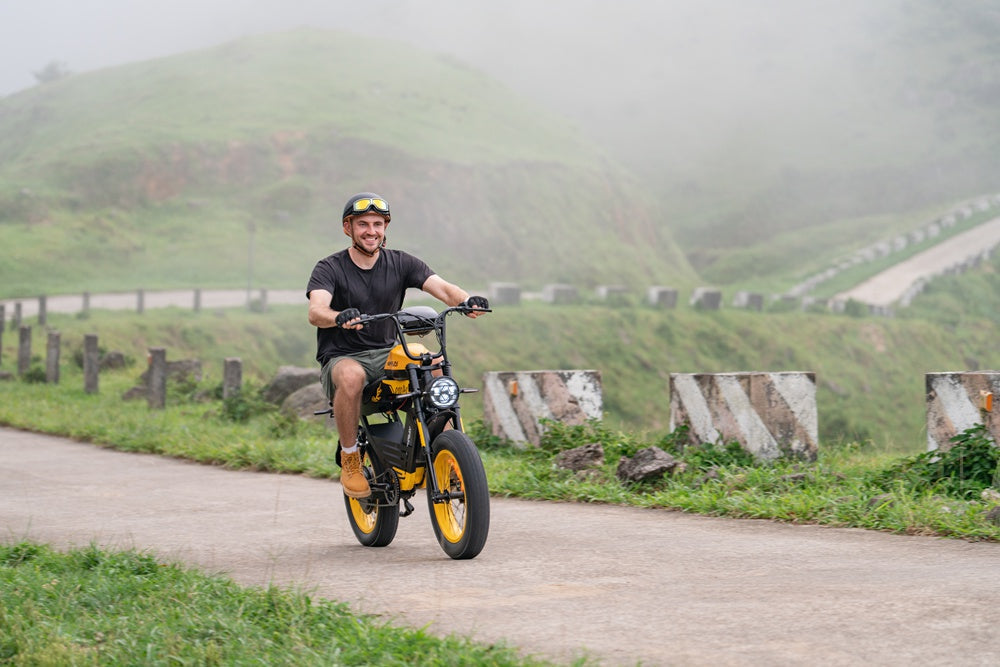
What Electric Motorcycles Under $3,000 Suit Beginners?
Essential safety elements include: • Dual braking systems (disc + ceramic/drum) • 10-inch anti-slip tires • LED lighting systems • Speed limit modes (≤25 km/h for new riders) • Low-center gravity frame designs
Electric motorcycle under $3000
Modern electric motorcycles incorporate advanced safety technologies that go beyond basic requirements. The dual braking system combines hydraulic disc brakes in front with energy-recuperating ceramic brakes in rear, providing 40% faster stopping distances compared to traditional drum systems. Anti-slip tires with silica-enhanced tread patterns maintain 85% traction efficiency even in wet conditions, crucial for urban commuting.
LED lighting systems now often include adaptive cornering lights that illuminate turns based on lean angle sensors. Speed limit modes can be progressively adjusted through manufacturer apps, allowing riders to increase maximum speed by 5 km/h increments after completing safety tutorials. Frame designs now incorporate aluminum alloy reinforcements around battery compartments while maintaining overall weights under 100kg.
| Safety Component | Beginner Benefit | Performance Metric |
|---|---|---|
| Dual Braking System | Emergency stopping power | 18m stopping distance at 30 km/h |
| Anti-Slip Tires | Wet surface stability | 0.78g lateral acceleration limit |
| LED Lighting | 360° visibility | 200-lux output at 10m distance |
How Do Battery Specifications Impact Performance?
72V20Ah-32Ah batteries provide optimal balance: - 60V systems: 60-85 km range (entry-level) - 72V systems: 70-100+ km range (premium) - Charge cycles: 800+ for graphene vs 300-500 standard lead-acid - Weight considerations: 72V packs average 35kg vs 28kg for 60V
HappyRun Electric Bike for Adults
Battery architecture directly determines riding characteristics. 72V systems deliver 25% more torque at low speeds compared to 60V equivalents, crucial for hill starts. Modern graphene batteries maintain stable voltage output between 20%-90% charge states, preventing the power drop-offs common in lead-acid models. Smart battery management systems (BMS) now monitor individual cell temperatures, automatically reducing output if overheating is detected during prolonged climbs.
Charging infrastructure compatibility is vital - 72V systems typically support 10A fast charging (0-80% in 2.5 hours) versus 6A standard charging for 60V units. However, fast charging should be limited to 3 sessions weekly to preserve battery health. Winter performance varies significantly - graphene batteries maintain 85% capacity at -10°C versus 55% for conventional lithium packs.
| Battery Type | Energy Density | Cold Weather Efficiency | Cycle Life |
|---|---|---|---|
| Lead-Acid | 30-40 Wh/kg | 45% | 400 cycles |
| Lithium-Ion | 100-265 Wh/kg | 60% | 800 cycles |
| Graphene | 160-300 Wh/kg | 75% | 1200 cycles |
FAQ
- Q: Can these motorcycles handle hills?
- A: Models with ≥800W motors (like Xinri Feima) manage 15° inclines comfortably.
- Q: What license requirements apply?
- A: Most 72V models require motorcycle license; check local regulations.
- Q: How long do batteries typically last?
- A: 2-3 years with proper care (avoid full discharges, extreme temperatures).
"Beginner models must balance power restriction with growth potential. The Xinri Feima’s 3-speed system allows skill progression while maintaining safety. For urban commuters, the Lvyuan Moda C1’s liquid-cooled technology prevents motor burnout during stop-and-go traffic – a common new rider pain point." – Urban Mobility Engineer














